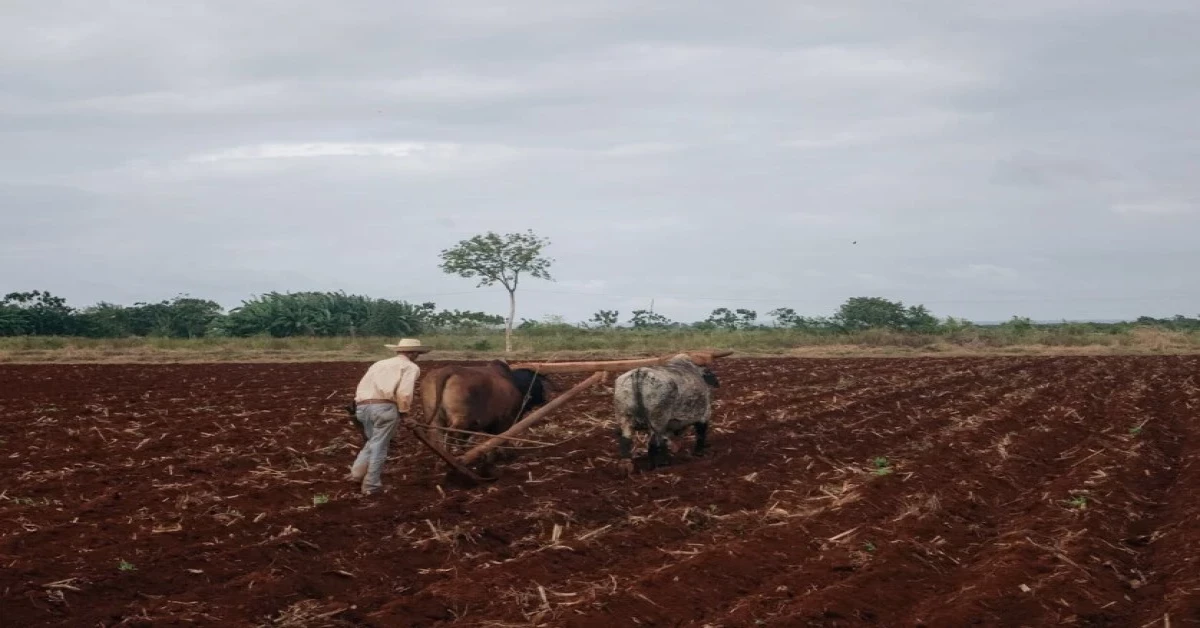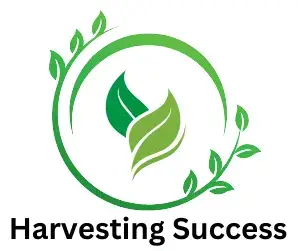Organic farming has been around for centuries, shaping the way humans grow food. Organic Farming: A Historical Perspective reveals how traditional methods relied on nature to maintain soil fertility and crop health.
Long before synthetic fertilizers and pesticides, farmers used composting, crop rotation, and natural pest control to sustain their lands. These ancient practices laid the foundation for what we now call sustainable agriculture.
The history of organic farming shows how farming evolved over time. In the early 20th century, scientists and agriculturalists began advocating for chemical-free cultivation. Pioneers like Sir Albert Howard promoted natural soil enrichment, influencing modern organic movements.
As industrial agriculture expanded, concerns grew about soil degradation and environmental damage, leading to a renewed interest in organic methods.
Today, organic farming is more relevant than ever. Consumers demand healthier food, and farmers seek sustainable alternatives. Understanding its past helps us appreciate its value in creating a greener future.
What is Organic Farming?
When exploring 0rganic farming’s historical perspective, it’s essential to first understand what organic farming entails. Organic farming is a method of agriculture that avoids synthetic chemicals, genetically modified organisms (GMOs), and artificial fertilizers. Instead, it relies on natural techniques to maintain soil fertility, control pests, and promote biodiversity.
One core principle of organic farming is soil health. Farmers use compost, manure, and crop rotation to enrich the soil with essential nutrients.
Crop rotation prevents nutrient depletion and reduces pests by changing plant species grown in a particular field.
Biological pest control is another key practice; where beneficial insects like ladybugs and birds help manage harmful pests instead of chemical pesticides.
Water conservation also plays a crucial role. Organic farmers use mulching and cover crops to retain moisture and prevent soil erosion. Additionally, organic livestock farming ensures that animals are raised without antibiotics or growth hormones, promoting ethical and sustainable food production.
By following these methods, organic farming not only produces healthier food but also protects the environment. Understanding its core principles helps us appreciate how it has evolved over centuries and why it remains relevant today.
History of Organic Farming
Like other thing organic farming has a history, when it started, evolved and what its state is today.
Ancient and Traditional Agricultural Practices
The history of organic farming can be traced back to early civilizations. Ancient Egyptians, Romans, and Chinese farmers used natural composting and crop rotation to maintain soil fertility.
They relied on animal manure, ashes, and plant residues to improve crop yield. These early practices ensured long-term soil health without the use of synthetic chemicals.
For example, Chinese farmers practiced green manuring, planting legumes to fix nitrogen in the soil. Roman agriculturists believed in balanced crop rotation, ensuring sustainable farming for generations. Such methods laid the foundation for modern organic principles.
Emergence of Modern Organic Farming
During the Industrial Revolution, synthetic fertilizers and chemical pesticides became widely used. While they increased crop yields, they also caused soil degradation, pollution, and a loss of biodiversity. In response, agricultural scientists began promoting natural alternatives.
One key figure was Sir Albert Howard, often called the “father of modern organic agriculture.” He studied traditional Indian farming methods and emphasized composting, crop diversity, and soil health. His book “An Agricultural Testament” (1940) inspired the organic farming movement.
Another influential figure was J.I. Rodale, who introduced organic farming to the U.S. in the 1940s. He established the Rodale Institute, promoting sustainable agriculture and launching Organic Farming and Gardening magazine.
Growth of the Organic Movement
After World War II, chemical pesticides like DDT became popular, leading to environmental concerns. By the 1960s, scientists and environmentalists raised alarms about soil erosion, water pollution, and food safety.
This led to the creation of organic certification bodies such as the USDA Organic (United States) and EU Organic (Europe). These organizations set strict guidelines for organic food production, ensuring ethical and sustainable farming practices.
Today, organic farming is a growing global movement, driven by consumer demand for healthier and eco-friendly food. Its historical evolution highlights the importance of sustainable agriculture for future generations.

Organic Farming and the Environment
Looking at Organic Farming: A Historical Perspective, one cannot ignore its role in protecting the environment. Organic farming enhances soil conservation, biodiversity, and water management, making it a key player in sustainable agriculture.
Also Read: Why Organic Farming is Essential Today?
Unlike conventional farming, which often depletes soil nutrients, organic farming maintains soil fertility through composting and natural fertilizers. This reduces erosion and improves water retention, helping farmers sustain productivity in the long run.
Biodiversity also thrives in organic farms. Since chemical pesticides are avoided, beneficial insects, birds, and microorganisms flourish, creating a balanced ecosystem. Organic farms also support crop diversity, reducing the risk of pests and diseases that can devastate single-crop fields.
Moreover, organic farming helps combat climate change through carbon sequestration. Healthy organic soils store carbon, reducing greenhouse gas emissions. Additionally, sustainable practices like cover cropping and reduced tillage lower the environmental footprint of agriculture.
In comparison, conventional farming relies heavily on chemical fertilizers and pesticides, leading to soil degradation and water pollution. Overuse of synthetic inputs also contributes to biodiversity loss and greenhouse gas emissions.
By adopting organic farming, we take a step toward a healthier planet. Sustainable agricultural practices ensure food security while preserving natural resources for future generations.
Advantages of Organic Farming
Organic farming offers numerous benefits for human health, the economy, soil, and the environment. Here are some key advantages:
Health Benefits
- Organic produce is free from chemical pesticides* and synthetic fertilizers, reducing health risks.
- It is often richer in nutrients, containing higher levels of antioxidants and essential minerals.
Economic Benefits
- Growing consumer demand for organic products means farmers can charge premium prices.
- Organic farming promotes long-term cost efficiency, as soil fertility is naturally maintained without expensive synthetic inputs.
Social and Ethical Benefits
- Organic farming supports small-scale farmers and rural communities, offering them better income opportunities.
- Ethical livestock farming ensures animals are raised in humane conditions, without antibiotics or artificial growth hormones.
As more people recognize these advantages, organic farming continues to grow worldwide, offering a sustainable future for food production.
Challenges of Organic Farming
Despite its many benefits, organic farming also reveals significant challenges that farmers face.
One major challenge is higher production cost. Organic farming often requires more labor for weeding, pest control, and soil maintenance. Since synthetic chemicals are avoided, yields may be lower, making it harder to compete with conventional farms.
Pest and disease management is another hurdle. Without synthetic pesticides, farmers rely on crop rotation, biological controls, and natural repellents, which may not always be as effective. Severe infestations can lead to crop losses.
Additionally, certification and regulatory challenges make organic farming difficult for small farmers. Getting organic certification can be expensive and requires strict compliance with national and international guidelines. Many small-scale farmers struggle with these costs and bureaucratic procedures.
Despite these obstacles, the demand for organic food continues to rise. Governments and organizations are working to support farmers through subsidies and research on sustainable techniques. As awareness grows, organic farming will likely become more accessible and widespread.
Global Perspectives on Organic Farming
Organic farming is growing worldwide, but its progress varies across regions. Some countries lead in adoption, while others face challenges in large-scale implementation. However, the demand for sustainable agriculture continues to rise.
Europe:
Europe has one of the highest adoption rates of organic farming. Countries like Germany, France, and Denmark strongly support organic agriculture. The European Union (EU) promotes sustainability through strict regulations and financial incentives.
Many farmers receive subsidies to switch to organic methods, making it easier to expand organic farms. As a result, organic products are widely available in European supermarkets.
United States:
The U.S. organic farming industry has grown significantly over the past few decades. The USDA Organic certification ensures that food meets strict organic standards. Consumer demand has increased, leading to a booming organic food market.
Many grocery stores now dedicate entire sections to organic produce. Additionally, small and large farms are adopting sustainable methods to meet the growing interest in healthier food choices.
Asia and Developing Nations:
Organic farming is expanding in Asia, but challenges remain. Many farmers rely on traditional farming methods that include some organic principles. However, large-scale organic adoption faces obstacles such as high certification costs and limited government support. Despite this, awareness is increasing.
Countries like India and China are promoting organic agriculture through education programs and subsidies. In Africa and South America, small-scale farmers are gradually adopting organic techniques to improve soil health and crop yields.
Conservation Efforts and the Future of Organic Farming
Organic farming plays a key role in environmental conservation. Governments, organizations, and scientists are working together to improve organic practices and ensure a sustainable future.
Policies and Government Initiatives:
Organizations like the Food and Agriculture Organization (FAO) and the World Health Organization (WHO) support organic agriculture globally. Many governments offer subsidies and grants to encourage farmers to adopt organic methods.
In some countries, organic certification is becoming more accessible, helping small farmers enter the organic market.
Technology and Innovation in Organic Farming:
New technologies are shaping the future of organic farming. Artificial intelligence (AI) and data-driven farming help monitor soil health and improve crop rotation strategies. Eco-friendly pest control methods, such as natural predators and bio-pesticides, reduce reliance on synthetic chemicals.
Innovations like precision farming help farmers use resources efficiently, making organic agriculture more viable.
Future Outlook:
The demand for organic food continues to grow. Consumers are becoming more conscious of their food choices and prefer environmentally friendly options. As a result, more farms are shifting to organic methods.
With technological advancements and stronger policies, organic farming is expected to play a crucial role in global food security and environmental conservation.
Key Aspects to Consider in Organic Farming
Organic farming requires careful planning and sustainable practices. Two critical aspects influence its success:
Soil Health and Organic Matter:
Healthy soil is the foundation of organic farming. Composting, green manure, and crop rotation improve soil fertility. These methods help retain nutrients, prevent erosion, and enhance water retention.
Over time, organic farming increases carbon sequestration, reducing greenhouse gas emissions and helping combat climate change.
Consumer Awareness and Market Trends:
The organic food market is growing as more consumers seek healthier, chemical-free options. Retailers and supermarkets now stock more organic products to meet demand.
Strong consumer interest is shaping government policies and influencing the future of organic certification.
Conclusion
Organic farming has a rich history and continues to evolve. It promotes soil health, biodiversity, and sustainable food production while reducing environmental damage.
Around the world, policies and innovations are driving the growth of organic agriculture. However, challenges remain, especially in developing nations where certification and resources can be costly.
Despite these obstacles, organic farming is crucial for food security and environmental conservation. As consumers, we play a role in supporting sustainable agriculture by choosing organic products and spreading awareness.
As we reflect on organic farming: A historical perspective, it is clear that sustainable agriculture is the future. By embracing organic methods, we can protect our planet and ensure healthier food for generations to come.












